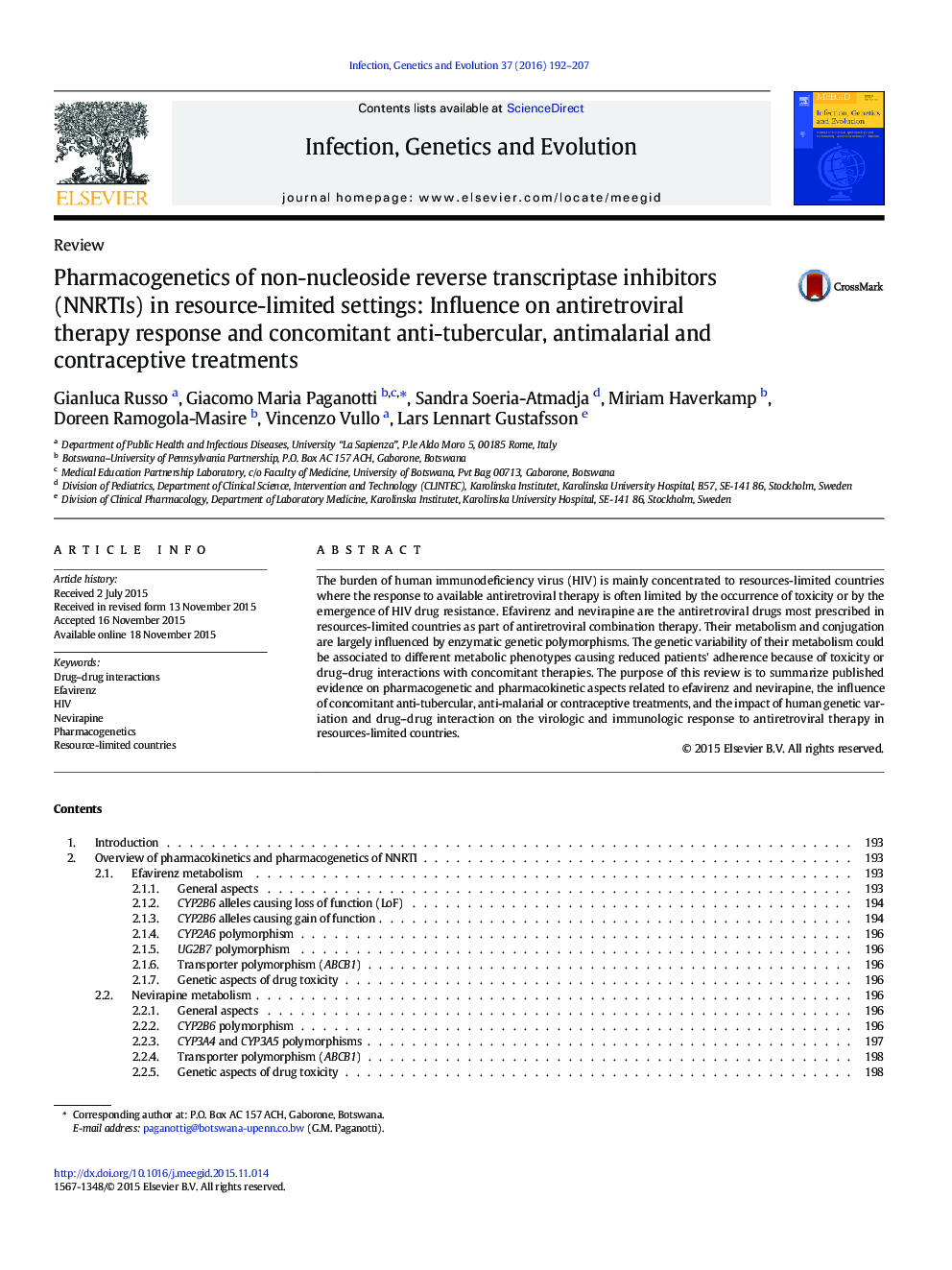| Article ID | Journal | Published Year | Pages | File Type |
|---|---|---|---|---|
| 5909066 | Infection, Genetics and Evolution | 2016 | 16 Pages |
â¢The burden of the HIV infection is mainly concentrated in resource-limited countries.â¢There, anti-HIV therapy is based on efavirenz- or nevirapine-combination therapies.â¢The variability of drugs' pharmacokinetics is driven by different genetic backgrounds.â¢Another cause of pharmacokinetic's variation is drug-drug interaction.â¢We explore pharmacogenetic interactions among HIV, TB and antimalarial drugs.
The burden of human immunodeficiency virus (HIV) is mainly concentrated to resources-limited countries where the response to available antiretroviral therapy is often limited by the occurrence of toxicity or by the emergence of HIV drug resistance. Efavirenz and nevirapine are the antiretroviral drugs most prescribed in resources-limited countries as part of antiretroviral combination therapy. Their metabolism and conjugation are largely influenced by enzymatic genetic polymorphisms. The genetic variability of their metabolism could be associated to different metabolic phenotypes causing reduced patients' adherence because of toxicity or drug-drug interactions with concomitant therapies. The purpose of this review is to summarize published evidence on pharmacogenetic and pharmacokinetic aspects related to efavirenz and nevirapine, the influence of concomitant anti-tubercular, anti-malarial or contraceptive treatments, and the impact of human genetic variation and drug-drug interaction on the virologic and immunologic response to antiretroviral therapy in resources-limited countries.
